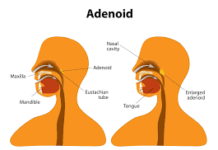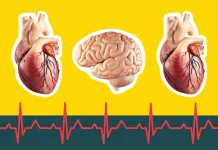1. Focus on heart-healthy foods.
It may seem like a no-brainer, but a diet centred around fruits, vegetables, whole grains and healthy proteins and fats are simple changes you can make to help protect your heart. Limiting sodium and replacing saturated fats and processed foods with unsaturated fats, such as olive oil, are better for you too.
Studies found that a higher-quality diet is consistently linked with a lower risk of death from heart disease, cancer and other conditions. In fact, the American Heart Association has updated its guidelines for a heart-healthy diet. Instead of seeking out specific foods or nutrients, they emphasize a general focus on healthy eating.
The new guidelines also support popular diet plans, including the Mediterranean diet and the DASH diet. A low-fat diet may also assist in weight loss and lowering cholesterol levels. However, talk to your health care provider before making any changes to your diet.
2. Maintain a healthy weight.
Achieving and maintaining a healthy weight is one of the best things you can do for your heart. Being overweight or obese is linked with several health conditions. According to the Centers for Disease Control and Prevention (CDC), people who are overweight are at a greater risk for the following diseases:
-
Coronary heart disease
-
Stroke
-
-
-
Type 2 diabetes
3. Stand up and get moving.
Avoid sitting for long periods as it increases your risk of cardiovascular disease. In recent years, research has suggested that staying seated for long periods of time is bad for your health — no matter how much you exercise.
Engage in activities that get your heart rate up throughout the day, like taking the stairs instead of the elevator, walking your pet or doing household chores, in addition to getting at least 30 minutes of moderately intense aerobic exercise.
-
A brisk walk at about 2.5 miles per hour or faster
-
A nice swim
-
A bike ride over level terrain where you go slower than 10 MPH
-
A doubles tennis match
-
Ballroom or line dancing
4. Live smoke-free.
Quitting smoking or vaping is an excellent way of keeping your heart in top condition. Just minutes after you stop smoking, you can start reaping health benefits.
The CDC reports that smoking puts the increased chance of coronary heart disease at 2 to 4 times greater than non-smokers. Smokers also have a 2 to 4 times greater risk of stroke.
It’s also important to avoid secondhand smoke as this increases your risk for heart attack and stroke. According to the National Heart, Lung and Blood Institute, nonsmokers who have high blood pressure or high blood cholesterol have an even greater risk of developing heart disease when they’re exposed to secondhand smoke. This is because the chemicals emitted from cigarette smoke promote the development of plaque buildup in the arteries.
Many cessation products can help you quit your habit as well as support groups that can help you stay on track. If you smoke, talk to your health care provider about ways to kick the habit
5. Catch the signs early.
It is a popular belief that men are the ones who get heart attacks, but the reality is that they affect women as well. Some heart attacks are sudden and intense, while most start slowly with mild pain or discomfort.
Pay attention to your body and call 911 (seek emergency room care) if you experience the following symptoms of a heart attack:
-
Chest pain or pressure, like you have something heavy sitting on your chest
-
Intense pain in the upper part of your body, typically the neck, back and jaw
-
Severe shortness of breath
-
Cold sweats
-
Fatigue
-
Light-headedness or dizziness
-
Nausea or vomiting
As with men, women’s most common heart attack symptom is chest pain, but women are somewhat more likely than men to experience shortness of breath, nausea/vomiting and back or jaw pain.


































